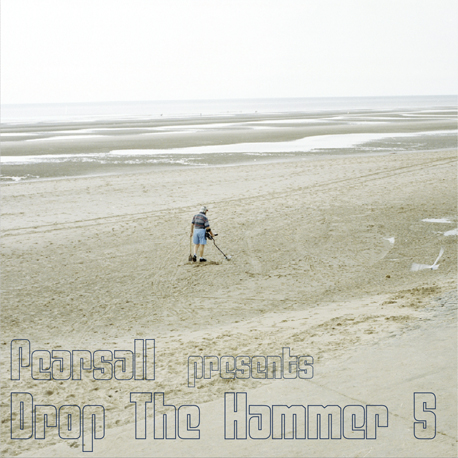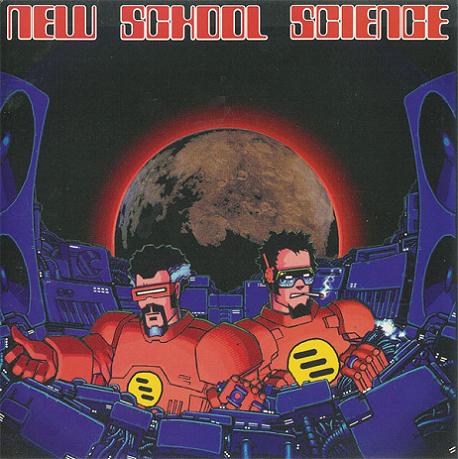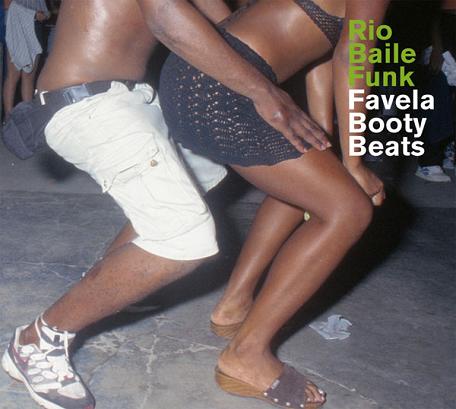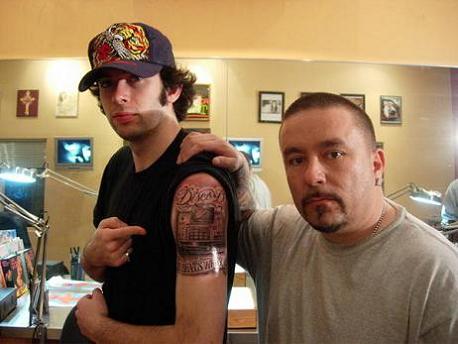Pearsall presents Drop The Hammer 5
right-click on the title and save as to download
Mixed in London, August 2009
(54:28, 101 MB, V0 VBR MP3)
large version of the cover
Cue file
Style: electro
Direct link to the mix:
http://www.sonicrampage.org/mixes/dth5/Pearsall-DropTheHammer5.mp3
Tracklisting:
01. Zwart Licht Kommando – 5200 (Finger Ltd)
02. Solar Chrome – I’m A Machine (Maschinen Musik)
03. Anthony Rother – Dude On The Street (Electrolux)
04. The Advent – Mind And Spirit (Electrix)
05. Mystic Letter K – Dust (Electrix)
06. Marco Bailey – Don’t Leave The Drums (Intec)
07. Yoshihiro Hayashi – Unload (Tokyo Electro Beat)
08. Anthony Rother – Forever (Datapunk)
09. Jedi Knights – May The Funk Be With You (Smugg)
10. Dexter – Echt Vet! (Clone)
11. Dennis DJ & MC Cabo – Tire A Camisa (Essay)
12. Disco D – You Need Another Drink (Rapster)
13. 313 Bass Mechanics – Pass Out (Instrumental Mix) (Breakin’)
14. DJ Nasty – Knockturnal (Motor City Electro Company)
15. Sterac Electronics – Keep On Running (Music Man)
16. Ra-X – Hack The Pentagon (Angelmaker)
17. Kill Memory Crash – Crash V8 (Kill Memory Crash Remix) (Ghostly International)
18. Dexter – Z.W.A.M. (Klakson)
19. Anthony Rother – No Love (Datapunk)
cover: Photo by my sister Laura Helms, originally featured on this blog post
I’m proud to present to you Drop The Hammer 5, the fifth edition of my Drop the Hammer series of mixes, a series that has now evolved into a multi-genre crate-digging exercise. The first mix was done back in 2003 and was an old skool drum n’ bass mix, while the second, a year later, was an up-to-date (at the time) mix of breakbeat tracks. At the time I had the idea that I would use the title for an ongoing series of breaks mixes, but I stopped buying breaks (and all other records for that matter) for a couple of years, so that idea went on the shelf.
Earlier this year, though, I decided to revive the title when I decided to sell off all of my breaks tunes. The impetus for this decision was that I hadn’t bought any new breaks records in quite a while, I had no intention of buying more tunes, and therefore I might as well clear some space in my room. Since I still liked the tunes I thought that a good send off would be to do a couple of short mixes featuring some of my favourites. Thus was born Drop The Hammer 3 and Drop The Hammer 4.
Now that I have decided to move back to Edinburgh I have become even more ruthless about clearing out vinyl for sale through Discogs. Following the same principle that I applied to breaks, I have decided to sell off my (fairly limited) selection of electro tunes, and so before they disappeared I thought that I should get a mix down (although some of my favourites went before I got around to recording this mix). By the same token, I have plans for another couple of Drop The Hammer mixes before I go, with possibilities including tech-house, grime (instrumentals only), American house, and drum n’ bass from the early part of this decade. If you have any preferences, let me know in the comments section below!
Part of the fun of doing these mixes is that they are nothing more than an exercise in digging through the crates. No need to worry about being up-to-date with the latest trendiest tunes – just knock some beats together and have fun.
And that’s exactly what I did with this mix.
I’ve always been a fan of electro. It may never have been a great all-consuming passion of mine like techno or hard trance, but I’ve always enjoyed it. What’s funny is that I define electro in quite a purist way, even though I am hardly a partisan of the music. When I talk about electro I generally mean music that is clearly inspired by the pulsing 808 bass beats of the original electro sound – the nexus of Kraftwerk, Afrika Bambaata, and Miami Bass. What I definitely don’t mean when I talk about electro is house music with tweaked-up digital basslines a la Deadmau5, even though that is now what most people think of when you talk about electro (along with the generally ill-advised clothes and hairstyles of the electroclash movement).
Not that electro is a narrow music – not by any means! Under the banner of electro you can find a huge range of sounds, textures, and moods, from producers working away across the world. Hell, this mix features tracks from Brazil, Japan, America, Germany, Britain, Holland, and Belgium. A truly cosmopolitan stew that is reflected in the variety of sounds that I have used over the fifty minutes of the mix, starting out with cold and rigidly robotic beats before moving through funky 80’s pastiche tracks, Brazilian funk carioca, Detroit ghettotech, and then back to some dark beats before rounding off with high-tech digital punk action.
Phew!
Unlike some of my other recent mixes, I don’t have any deeeeep thoughts about this one, so I won’t be writing a big essay. What I have decided to do, though, is provide some links to some interesting articles showing you a bit about the background to the various tunes.
First off, since I am such a massive fan of his (as if you couldn’t guess from the fact that I used three of his tunes in this mix!), please check out this fascinating interview with German electro wizard Anthony Rother:
Here’s Anthony on his live performances:
“I don’t have time to think, I just go, I don’t think, I just do, up on stage … Working with the MIDI and keyboards, I do the vocals live. Arranging the tracks on the stage is the conversation …
“I don’t prepare, I come and I be. I can’t prepare. I am waiting for a surprise when I come. Preparing is something I can’t do. It is nice to have that surprise …
I never know where I’m going, how many people I’ll go to. I see it when I’m there, let’s go. I go there and see it and jump into the situation.
“There’s no plan in my head … I do it up on stage.”
For quite some time electro has been a fashionable sideline for techno producers looking to work outside the strict four-to-the-floor thump of dancefloor techno. Dave Clarke has released a number of (fantastic) electro mix cd’s, and many a techno dj has been known to drop an electro cut to mix things up in the middle of a set. Techno producers often bring a certain sensibility to their electro productions, the relentless rhythms and atmospherics of techno transposed to stiff robotic beats. I’m a big fan of these type of tunes, and I’ve included a number in this mix, with tunes from quite a few well-known techno producers – Cari Lekebusch (Mystic Letter K), Steve Rachmad (Sterac Electronics), The Advent, and Marco Bailey.
Possibly the most celebrated electro project by techno producers was Jedi Knights, the electro alias of Mark Pritchard and Thomas Middleton, two Cornishmen who have over the last two decades created a veritable library of classics in house, techno, ambient, and drum n’ bass under their Global Communication, Reload, Secret Ingredients, and Chameleon aliases. Their 1996 album ‘New School Science’ was one of the key moments in the beginning of the electro revival . Featuring some of the rudest, silliest electro to be released in over a decade, the album’s combination of thumping bass, science-fiction sound effects, wild-eyed funk and cheeky comedy samples was an absolute breath of fresh air, setting the scene for the electro explosion that followed. Going back to it now the album has held up brilliantly, the electro tracks like ‘Dance of the Naughty Nights’, ‘May The Funk Be With You’ (featured on this mix), and ‘Noddy Holder’ nicely balanced by the New York house tribute ‘One For MAW’, the soaring melodic breaks of ‘Solina’, and the drifting ambient bliss of ‘Afterlife’. Sadly, the threat of a LucasArts lawsuit meant that the Jedi Knights had to hang up their synthesizers after only one album and several singles, but what an album! If you get the chance to score it second-hand I would absolutely suggest you take it.
Here’s ‘Dance of the Naughty Nights’ (taken from the Ken Ishii X-Mix Video … check this out for some primitive graphics, kids!)
Having covered the funkier side of electro with Jedi Knights and Dexter, I decided that a logical follow-up would be to throw in a track from Rio de Janeiro’s funk carioca scene. Funk, or baile funk as it is often referred to in English (after the bailes or parties where they are played), is the sound of the favelas (shanty-towns) that swarm over the hills overlooking the city. If you’ve seen the movie City of God, then it’s the modern soundtrack to that world. It’s a thrilling sound, totally visceral, thumping Miami Bass-influenced electro beats overlaid with Brazilian percussion, manic synth stabs, uncleared samples, and frenetic rapping in Portuguese. Fun stuff!
Like other global urban music styles such as rap, reggaeton, and dancehall, in funk the lyrics are primarily concerned with sex, violence, and money. The usual stuff, really. Although I generally find that kind of thing a bit boring and even tacky, one of the advantages of listening to music in another language is that I can completely ignore what they are saying, and I can just concentrate on the sound, with the vocal element reduced to just another melodic/rhythmic element.
The story behind the music is fascinating, though, and it is well worth checking out Alex Bellos’ 2005 article in the Guardian about the scene in Rio:
In the sultry depths of Rio’s Nova Holanda shanty town – or favela – more than 1,000 people are dancing in a narrow street. A wall of speakers stacked 15 feet high and 60 feet wide sends a dirty, electro beat shuddering through the ground. On a tiny stage, MCs Juca and Paulinho shout out the lyrics of their hit ’24 Hours’: ‘Bullets into the Terceiro,’ they chorus. ‘Shoot the snitch!’ Suddenly the crackle of gunfire cuts through the bass: from the middle of the swaying crowd, someone is shooting into the air.
A sea of hands goes up: the men point their index fingers and cock their thumbs, waving imaginary guns over their heads. Other hands form into C and V shapes – the Rio gang sign of the Comando Vermelho, the ‘Red Command’ drug faction that runs this favela – and rivals to the dealers of the Terceiro or Third Command …
An hour later, as the two MCs leave, the block party is still going strong; Juca and Paulinho pass two teenage boys who are dancing together, waving their automatic pistols in the air. Back in their car, Juca shrugs off the gunfire during the set. Anyone brought up in the favela is used to the sound of bullets, he says. ‘And anyway, if the guy shoots in the air, it means he likes the song.’
The track I have chosen is from the Rio Baile Funk: Favela Booty Beats compilation, which came out on Germany’s Essay Records back in 2004. It’s pretty good, and well worth a look if you get a chance.
Following up on the Rio track I’ve got three ghettotech tracks from Detroit:
The music mirrored the mix style inundating Detroit-fast tempos, bass, and dirty lyrics. Detroit had long been a competitive DJing scene, where jocks had to incorporate turntablist tricks and scratches into blistering mixes that pureed decades of tunes popular in the city. Ghettotech recordings play directly into this facet of the city’s culture, where the stripped down repetitive beats make for perfect DJ tools. Homegrown bass hits regularly outsold the popular hip-hop singles at the local record shops. And because many of the requisite DJ tricks necessitated two copies of the same record, it was not uncommon for a DJ Assault or DJ Godfather record to move thousands of copies in just a few weeks just within the confines of the 313 area code. “Ghetto records were selling more than LL Cool J,” Nasty affirms. Lesser-known artists could profit off a decent local hit. DJ Body Mechanic, whose latest homespun label is H3O Music and has produced several notable ghettotech hits, broke down the economics of selling in Detroit during ghettotech’s heyday: “You can make your money two or three times over and eat off a single. You pull 10,000 singles, you’re doing pretty damn good, but you’ll average 1000, 2,000, 3000.”
The three tracks I have selected for the ghettotech section are by Disco D (who sadly took his own life several years ago) and DJ Nasty (aka 313 Bass Mechanics), who are both white, which makes them a bit of an oddity in terms of the Detroit scene (Detroit being the blackest city in America). I’ve had to pitch their tunes down to fit them in the mix, since Detroit bass tracks are pretty fast.
Although he is usually associated with Detroit, Disco D was actually from Ann Arbor, another city in Michigan. He is the person who coined the (occasionally controversial) name ghettotech for the music. He was an awesome producer and dj (he did the beat for The Ski Mask Way, which was easily the best tune 50 Cent ever did), and he played a key role in the development of the sound as a teenager:
His mother ferried him to gigs in Detroit, where he helped conceive ghetto-tech, the bastard child of Miami bass and Detroit techno. An especially catchy genre, it was typified by records like DJ Assault’s “Ass N’ Titties,” in which a minimal electro-porno groove competes with a simplistic call and response of “Ass and titties, titties and ass.” As he entered the University of Michigan, the dichotomy between super-DJ Disco D (his best-known ghetto-tech record, committed to wax while he was still a virgin, is called “Dick That Bitch Down”) and David Shayman, mild-mannered business student, just added to the hype. It made sense: The son of a college professor and a social worker in utopian Ann Arbor, Disco defied categorization. At live shows, he augmented his turntable acumen by spontaneously creating beats and playing kung-fu sound effects during floor-clearing brawls.
Following the three Detroit tracks I switch back to dark and menacing electro, with one of the highlights for me being Kill Memory Crash’s ‘Crash V8’, a twisted ride. Check out the video below:
Phew, I think that’s enough for now … enjoy the mix!



